I first visited Mexico in the early ‘90s because at that time I could not afford to go to Spain. I wanted to meet the characters populating Pedro Almodóvar’s movies and ended up in what was then the poor cousin, Mexico. So much has changed since then. Spain’s economy crashed, Mexico’s graduated to an up and coming emerging market, and I was hooked and fell in love with the country, discovering characters equal to, if not more outlandishly fun than in Almodóvar films. There was no choice but to return and after many times visiting I opted to retire here, but the question was to which of the expat communities. I narrowed it down to San Miguel de Allende or Lake Chapala.
For those without Spanish language skills these communities are ideal. Both have solid medical, assisted living venues, dental, organic food, and positive lifestyle opportunities for a healthy and happy retirement, but where they differ most is in overall lifestyle influenced by size, location, and culture. Both still bear the watchwords of caution while traveling and living in Mexico but once there you will see just how lively, colorful and fun your life can become.
Colonial Arts Scene v Lakeside Casual
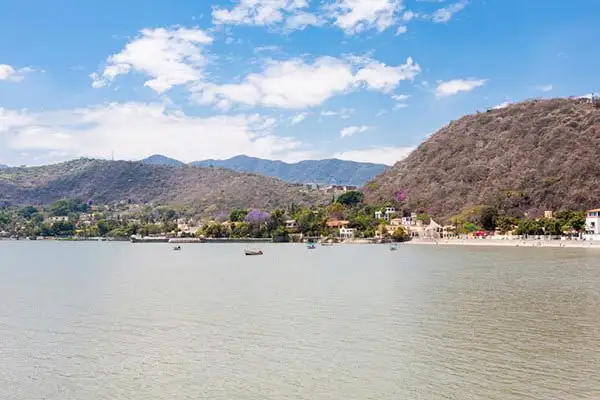
San Miguel de Allende is nestled in the Sierra Madres in the central interior about four hours outside Mexico City. It is a colonial city dating from the 16th century. At an elevation of 6,200 feet it is comparable to Santa Fe, New Mexico. For people with blood pressure or diabetic issues this is something to consider, because the elevation does impact your numbers.
The population is approximately 140,000. It is one hour from Queretaro (an industrial urban center and the third largest city in Mexico) and Guanajuato (a university and music town). Much of the architecture from past centuries is intact and there is some hilly walking, particularly in centro (downtown). In the rainy season the flagstones get very slippery and they can be a challenge to negotiate for people with mobility issues, but they dry quickly.
In the past 12 years it has morphed from a reasonably priced and relaxed town into a boutique, bustling watering hole and weekend wedding destination. Still, scratch a little and the arts scene and inexpensive living are under the surface. It is attractive to people with a penchant for the arts, architecture, design, and music, increasingly connected to Mexico City’s arts and design scene by transplanted Mexico City residents.
Lying along Lake Chapala’s north shore and only a few miles apart, the two small towns of Chapala and Ajijic (a-hee-heek), known collectively as “Lakeside” by the locals, are the area’s main retirement hubs.
Lake Chapala is much closer to sea level with an elevation of 4,900 feet. The population, including Ajijic and Chapala, is around 43,000 and is located just over one hour from Guadalajara. Most of the walking in the area is flat, so it’s well-suited to people with mobility issues.
Due to the natural beauty of the area, Lake Chapala will also be of interest to groups interested in botany and day trips. There is a tradition of walking at sunset on the Malecon (the walkway adjacent to the lake). The proximity to Guadalajara makes it easy to get your big city fix and for a city of 8,000,000 it’s really beautiful and accessible.
San Miguel is more international as the activities and events such as the San Miguel Writer’s Conference and the Guanajuato International Film Festival attract people from around the world. The social scene circulates around a perpetual round of gallery openings. Although Canadians and Americans are by far the largest expat populations, the numbers of Europeans and Aussies etc. is much higher. It is more urban and urbane.
Lakeside resembles a beach town in the interior. That being said, close proximity to Guadalajara allows for dipping your toes into cultural activities such as opera and the Guadalajara Book Fair and Guadalajara Film Festival as well as emerging art galleries such as Ladera Oeste and activities associated with the Ajijic Cultural Centre and local galleries.
Climate
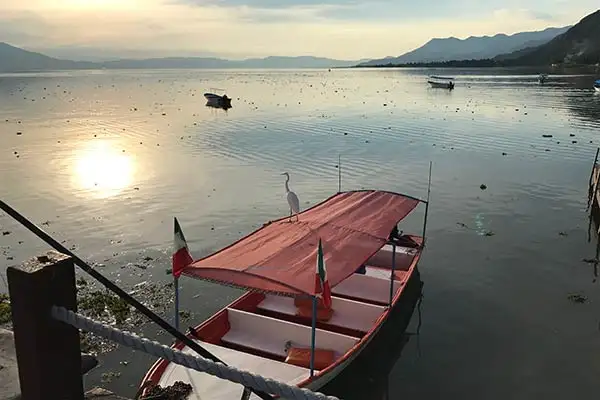
If you are planning on retiring, year-round climate is a consideration. San Miguel is dry except for a three-month rainy season. Lake Chapala is moist and kinder to the skin. Lakeside tends to have warmer weather and less cloud cover—it’s basically 72 F with variations year-round and the temperatures don’t go down too much at night.
During high season in San Miguel you need jackets, scarfs, and gloves at night and occasionally during the day. Houses are not insulated so make sure there is a heater, or you have money to buy a portable heater.
Lifestyle
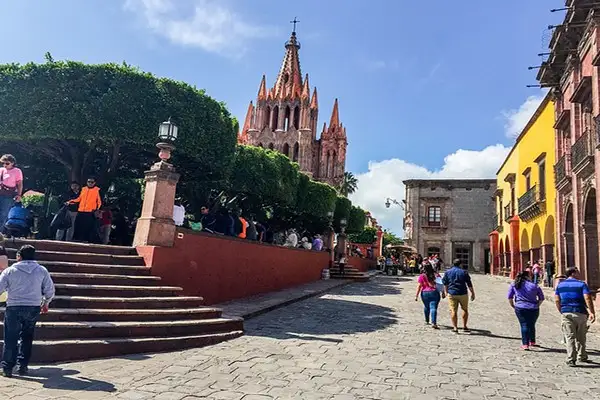
Lakeside is probably a third less expensive than San Miguel when you take gas, food lodging, cleaning services, personal hygiene services, transport, and medical costs into consideration. That being said it is possible to keep it quite comparable in San Miguel, it will just take more effort and a little luck with housing.
Isolation can be a problem for seniors and one of the benefits of retiring to these communities is the ease of establishing contacts. For single retirees, both communities offer companionship opportunities, but San Miguel has a larger number of single women and Chapala more of a couple’s scene so being a single can be easier to negotiate in San Miguel. Both communities have their own newspapers, which have event calendars: Atencion in San Miguel de Allende and the Guadalajara Reporter at Lakeside.
Lakeside falls under the influence of Guadalajara, which is more conservative than Mexico City. As a consequence, the “live and let live” attitude prevalent in San Miguel is not in evidence. Things that are everyday in San Miguel and Mexico City will stand out in the Guadalajara/Lakeside region.
Chapala proper is largely Mexican and middle class with a smattering of expats: the bulk live in and around Ajijic neighborhoods. The Lake Chapala Society (community hub), organic market, yoga schools, and the Arts Centre are all located in the Ajijic area.
There is a local bus that runs between Chapala and Ajijic at regular intervals, but it’s a commute. Chapala is only recommended if you are very well-equipped to get by on your own resources or need to take advantage of the generally lower cost of living.
Keeping Active
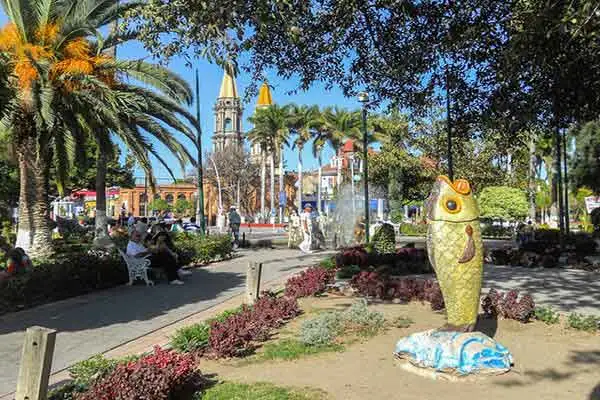
7 Incredible Housesits for a Bucket-List Vacation
7 Incredible Housesits for a Bucket-List Vacation
Whether you want to explore retirement destinations like Portugal, Mexico or Costa Rica… see more of your own country… or have a vacation and save money… Housesitting allows you to have the lifestyle experiences you want—often for less than it costs to live at home.
Discover 7 Incredible Housesits and amazing destinations in our daily postcard e-letter. Simply enter your email address below and we’ll send you a free special report – Your Trusted Guide to 7 Incredible Housesits Where You Could Enjoy a Bucket-List Vacation
By submitting your email address, you will receive a free subscription to IL Postcards and special offers from International Living and our affiliates. You can unsubscribe at any time, and we encourage you to read more about our Privacy Policy.
Body, mind, soul—feeding them is the key to an enjoyable retirement. At Lakeside, activities revolve around the Lake Chapala Society, which has an English library, lecture series, film nights, a lovely courtyard, and gardening talks.
There are major festivals and a Day of the Dead performance of Michael Jackson’s “Thriller”, which takes place in the central square. Day trips include excursion to see the monarch butterflies. Locals engage in ballroom dancing on Sunday nights in the El Jardin (the main plaza) and it is wonderful to just watch if you are not a dancer. There is a local arts scene, as well, which you can access through the Ajijic Arts Centre.
The upside of living in San Miguel is it is an active community, the downside, sometimes it’s too active. It is festival heavy and during Semana Santa (Easter week) locals flee, due to the throngs that descend on the town making it impossible to get on with day-to-day living. It has also become an international wedding destination. So often on the weekends routes to and through the centro (downtown) are blocked for wedding processions. Weekend traffic in Lakeside has also become difficult. Parking is an issue in both cities on the weekend.
The biblioteca (public library) in San Miguel is much larger than the Lake Chapala Society and the English collection reflects this. It also has a cinema showing second run, music series, and lectures.
Learning Spanish is an option in both locations through schools and private tutoring.
Both have wonderful reputations for significant contributions to local communities through volunteering. Many opportunities are available from working in the library, to working with abandoned animals and with local orphanages and volunteer tutoring.
Staying Healthy
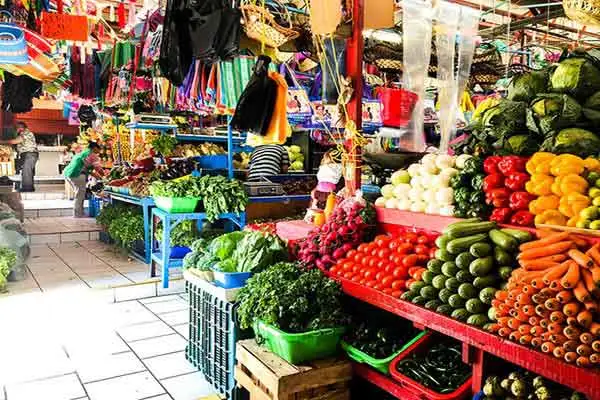
The key word after retirement is maintenance. Part of why people retire in Mexico is that it is easy to stay in great shape. As our doctors always stress, it’s the basics—diet and exercise.
Markets: In both communities there are local inexpensive markets and expensive organic markets. In San Miguel there are two stores where you can obtain organic meat: Luna de Queso and Via Organica.
There are large markets on Tuesday and Thursdays in San Miguel and on Wednesdays in Ajijic that sell local produce and fish at affordable prices. A bag of groceries costing $20 will have all my veggies, fruit, and fish for at least five days.
Walking: Both communities have cobblestone streets and walking on them actually massages your internal organs.
Yoga: Because both expat communities are largely comprised of retirees now, the classes are geared to seniors so keeping up is merely a matter of showing up. Classes in San Miguel run around $5 to $7. At the Drishti Center in Ajijic they are half that price.
Both communities have Kundalini (a form of yoga that includes meditation, mantra, physical postures, and breathing techniques). In fact there is a sizeable community devoted to Kundalini in Guadalajara and classes that emphasize pelvic and core regions, which becomes important for both men and women over 55.
Psychotherapy: For the mind part of the equation there are excellent therapists locally in San Miguel and there is a Gestalt therapy center in Guadalajara for Lakeside access.
Swimming: Outdoor swimming is available year-round. Taboada hot springs pool in San Miguel de Allende is about a 15-minute drive from centro. If you can get a group together annual memberships for two to four people are available at low rates. It is hot even in the winter and the temperature is excellent.
If you don’t have a car the Hotel Aldea offers aqua fit classes at 9:30 a.m. and 10:30 a.m.—some are now full up. Go during class hours and check. It is less than $4 to swim there and they do not sell memberships. The prices for aqua fit vary with instructors. It ranges around $5.
Hotel Balneario San Juan Cosala in Chapala offers a swimming pool and a number of thermal water bath stations including a steam room area. It is a less expensive option, around $10 for all stations.
Hotel Monte Coxala has a hillside infinity swimming pool—unheated. It has a full day of swimming and use of the hillside outdoor hot tubs for $13 including poolside drink service. Some of the finest design details in the area have been built into this property, which was years in the making.
7 Incredible Housesits for a Bucket-List Vacation
7 Incredible Housesits for a Bucket-List Vacation
Whether you want to explore retirement destinations like Portugal, Mexico or Costa Rica… see more of your own country… or have a vacation and save money… Housesitting allows you to have the lifestyle experiences you want—often for less than it costs to live at home.
Discover 7 Incredible Housesits and amazing destinations in our daily postcard e-letter. Simply enter your email address below and we’ll send you a free special report – Your Trusted Guide to 7 Incredible Housesits Where You Could Enjoy a Bucket-List Vacation
By submitting your email address, you will receive a free subscription to IL Postcards and special offers from International Living and our affiliates. You can unsubscribe at any time, and we encourage you to read more about our Privacy Policy.
Supplementing Retirement Income
While I don’t recommend coming to Mexico as an expat of any age without a fixed income from home, there are those that do even after “retirement” age. As such, you need strategies to supplement your income. These are my suggestions based on what friends and acquaintances have successfully used: housesitting, teaching English online, selling at the pulgas or organic markets or setting up a service-oriented business. Many local expats work as consultants.
Investments: Touching briefly on investment in Mexico, it is tempting to get involved in investments offering high returns, when it comes to the matter of settling an estate things can get complicated. Even keeping accurate inventories may not be a sufficient buffer. That being said many locals do live off the proceeds of local investments. If you plan on having relatives or loved ones claim an estate in liquid form, think about keeping the bulk of that in your home country.
Exchange rates: When I arrived in San Miguel in the ‘90s, you went to Norman’s ice cream shop and the Texan did your exchange rates while you ate your mint chocolate chip cone. Even the banks gave better rates than bank machines. These days exchanging at local banks in most of Mexico is no longer favorable, but particularly in San Miguel and Ajijic. Your best bet is withdrawals through ATM’s that have twinned with a Mexican bank or have locations in Mexico.
Scotiabank for Canadians is an excellent option as there is a Scotiabank in Chapala and in San Miguel de Allende and so you do not get charged from withdrawals on the Canadian end, only the small fee from Scotiabank Mexico.
If you need to exchange money in San Miguel, you do best with U.S. dollars and the best rates are regularly available through Intercam where you will be required to show your passport to exchange.
Paying with cash at markets etc. is your best bet but Delis, Walmart in Ajijic, and Mega in San Miguel de Allende and most restaurants take Visa card. However, low rent situations and markets all require cash. If you want to save on costs pay in pesos in cash.
Telephone: I’m just going to chime in on the great job AT&T has been doing in Mexico. There are locations in Ajijic and San Miguel. Accounts function cross-border for $10 a month. You can pay three months in advance so if you plan a trip stateside you can use it during the months you are away. I never had reception problems with AT&T. Telmex is bringing some of their plans in line with AT&T now that there is competition.
Deli Delights: As increasingly sophisticated expats demands have grown stores carrying import items have sprung up. Though I highly recommend adapting to local eating patterns and times, you don’t have to miss out on items from home the way you did 20 years ago. For example:
Luna de Queso (San Miguel de Allende)
Superlake (La Floresta, Ajijic)
And my personal guilty pleasure in Guadalajara:
Goiti (Guadalajara)
Restaurant Life
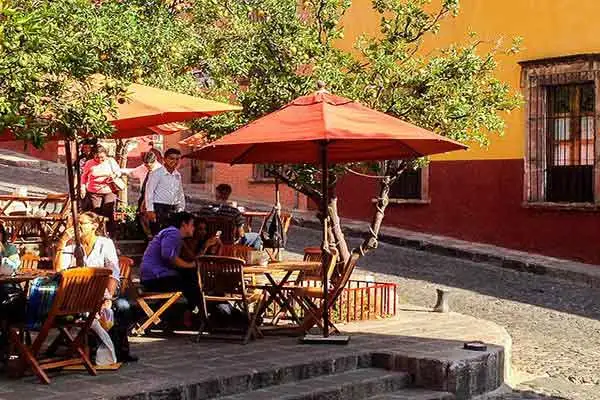
San Miguel del Allende has a Rosewood and Sierra Nevada hotel with excellent kitchens and the rooftop bar at the Rosewood is one of the many ideal locations to bring in the sunset with a drink and good conversation. In addition, restaurants such as Marsala are offering excellent cuisine.
Lakeside has fantastic breakfast spots dotting the highway as well as a number of great casual and fine dining selections. For a special evening I recommend a trip into Guadalajara to sample the great restaurants including Huesos (especially on a Saturday night), Pigs Pearls, and many others in Colonia Americana and Providencia.
The Takeaway
San Miguel de Allende is no longer the dusty village I stumbled upon in the early ‘90s. Ajijic more closely resembles that today. San Miguel is stimulating and engaging, but it is traffic heavy and acquiring a big city tone. I recommend starting with Airbnb.com and enough private medical insurance to cover you until you see if you enjoy the area. Then start to look for a permanent place and shop for global medical insurance in accordance with which ones are accepted by your clinic or hospital of choice in your chosen community. Securing a good physician can help to guide you through those hoops.
Know that you can embark enjoyably upon your new life in the color, sunshine, and warmth of a high-quality affordable retirement and make a positive contribution to your community.
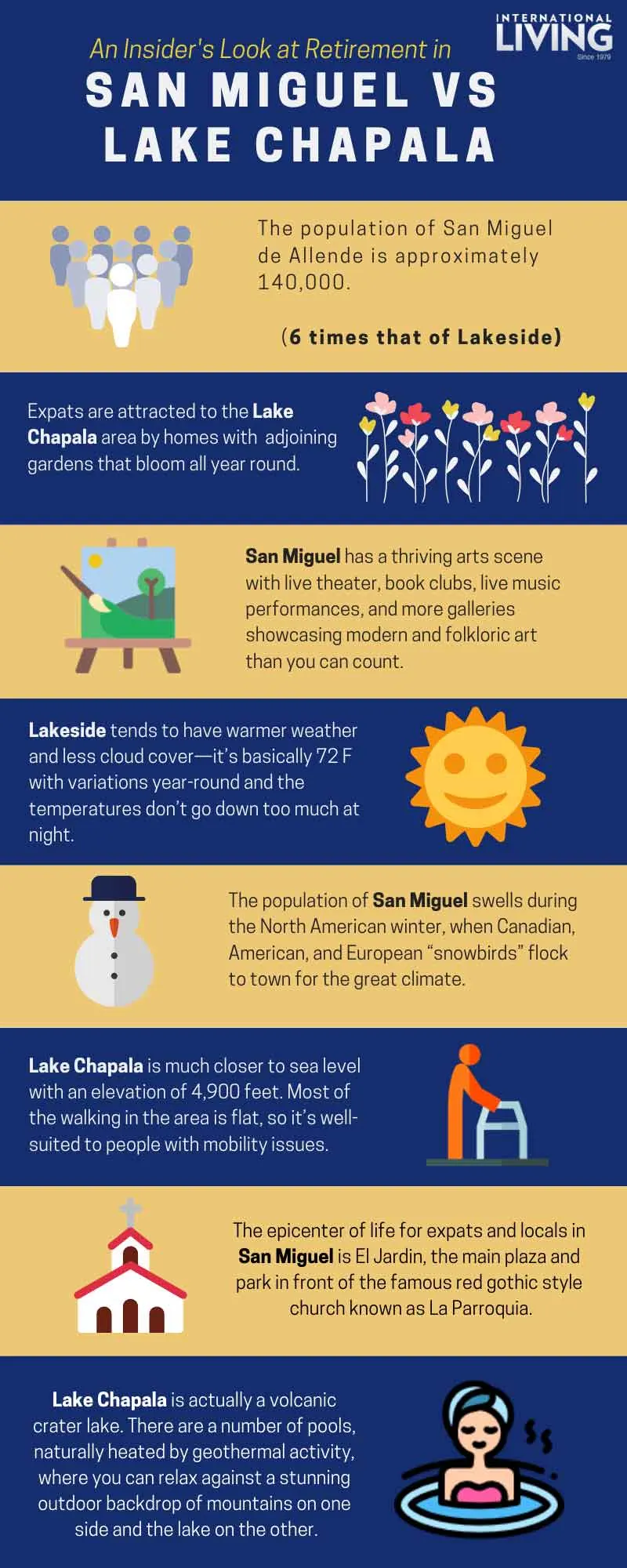
7 Incredible Housesits for a Bucket-List Vacation
7 Incredible Housesits for a Bucket-List Vacation
Whether you want to explore retirement destinations like Portugal, Mexico or Costa Rica… see more of your own country… or have a vacation and save money… Housesitting allows you to have the lifestyle experiences you want—often for less than it costs to live at home.
Discover 7 Incredible Housesits and amazing destinations in our daily postcard e-letter. Simply enter your email address below and we’ll send you a free special report – Your Trusted Guide to 7 Incredible Housesits Where You Could Enjoy a Bucket-List Vacation
By submitting your email address, you will receive a free subscription to IL Postcards and special offers from International Living and our affiliates. You can unsubscribe at any time, and we encourage you to read more about our Privacy Policy.
Related Articles
Maps of Mexico: Best Beachside and Mountain Towns
